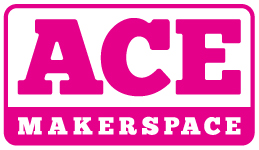Set up the bed and materials
- Zero the Z (see How to adjust the bed height (Z-axis) )
- Prepare your material for a test cut on the laser bed
- Jog laser head over to the material using arrow buttons to move a little bit, and hold down to move a lot.
- Use the focus tool to get a good start point for the focus process. Adjust the Z axis by raising/lowering table On laser (Z+/Z-) BUT NEVER WITH SOMETHING UNDER HEAD.
- Fire test dot On laser*: Press “Laser”, while looking at your material. You should see it burn a dot. Check the dot for roundness.
- Focus by raising/lowering table On laser (Z+/Z-). You are aiming to land the focal point of the laser in the middle (Z) of your material. For thick material you may need to refocus on multiple passes.
Cutting a test file
- Open LaserSoft (always start with a new file)
- Set the parameters for your workspace (i.e. Set relative origin point) – click “Parameters”, then “Workspace”:
- Set Platform -> Relative Position setting for how you want laser to cut relative to your material.
- Draw a shape to test with; set the power and speed (see the binder or poster for settings for your specific material).
- Download your test art to the laser
- Position the laser head over the material (mindful of relative origin)
- Press “origin” – ANY time you move the laser head PRESS ORIGIN
- Click the ‘Run Box’ command to confirm you will be on the material ( Rectangle icon with arrows on control panel)– this will move the laser in a rectangle around the area it will operate, without turning on the laser.
- Start the cut– click Start! DO NOT LEAVE THE LASER WHILE IT’S CUTTING. You need to watch it at all times to make sure nothing bad happens (e.g. burning down the building).
Adjust the focus, power, and speed settings as needed until you get the cut you desire.
Tips
There are limits to how fast the motors can move the head and gantry based on physics no matter what settings you use. For example, if your art is very small and detailed with lots of turns and you set a very high speed you are unlikely to get to that full speed or you may introduce “noise” to the cut.
Also, consider that if you test cut for settings on a 1cm square you are never getting up to the higher speed ranges no matter what your settings. This may fool you into thinking that the fast settings you are using will result in a cut-through on a bigger piece with longer cuts. So you will need to be very careful or game the power just a little bit. You can also just plan on a second pass for the bigger cuts.
We teach a course on designing for laser cutting that talks about various operator techniques for breaking up your art for optimal cutting based on these factors.
With all that in mind, your test cutting should be contextually relevant to what you are doing.
